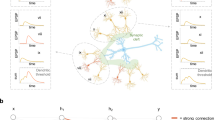Abstract
First introduced by MountCastle, cortical algorithms (CA) are positioned to outperform artificial neural networks second generations due to their ability to hierarchically store sequences of patterns in an invariant form. Despite their closer resemblance to the human cortex and their hypothetical improved performance, CA adoption as a deep learning approach remains limited in energy aware environments due to their high computational training complexity. Motivated to reduce CA supervised training complexity in limited hardware resources environments, we propose in this paper a piecewise linear or polygonal weight update rule for a supervised training of CA based on a linearization of the exponential function. As shown by our simulation results on 12 publicly available databases and our developed error-bound proofs, the proposed rule reduces CA training time by a factor of 3 at the expense of a 0.5% degradation in accuracy. A simpler approximation relying on the asymptotes at 0 and infinity reduces training time by a factor of 3.5 coupled with a reduction of 1.49% in accuracy.








Similar content being viewed by others
References
Edelman GM, Mountcastle VB (1978) The mindful brain: cortical organization and the group-selective theory of higher brain function. Massachusetts Institute of Technology, Cambridge
Hashmi A, Lipasti MH (2010) Discovering cortical algorithms. In: IJCCI (ICFC-ICNC), pp. 196–204
Hashmi AG, Lipasti MH (2009) Cortical columns: building blocks for intelligent systems. In: IEEE symposium on computational intelligence for multimedia signal and vision processing, 2009. CIMSVP’09. IEEE, pp 21–28
Hashmi A, Nere A, Thomas JJ, Lipasti M (2011) A case for neuromorphic ISAS. In: ACM SIGARCH computer architecture news, vol 39, no 1. ACM, pp. 145–158
Hashmi A, Berry H, Temam O, Lipasti M (2011) Automatic abstraction and fault tolerance in cortical microachitectures. In: ACM SIGARCH computer architecture news, vol 39, no 3. ACM, pp 1–10
Hajj N, Awad M (2013) Weighted entropy cortical algorithms for isolated Arabic speech recognition. In: The 2013 International joint conference on neural networks (IJCNN). IEEE, pp 1–7
Hajj N, Rizk Y, Awad M (2015) A mapreduce cortical algorithms implementation for unsupervised learning of big data. Proc Comput Sci 53:327–334
Awad M, Khanna R (2015) Efficient learning machines: theories, concepts, and applications for engineers and system designers. Apress, New York
Aleksandrovsky B, Whitson J, Andes G, Lynch G, Granger R (1996) Novel speech processing mechanism derived from auditory neocortical circuit analysis. In: Fourth international conference on spoken language, 1996. ICSLP 96. Proceedings, vol 1. IEEE, pp 558–561
Roelfsema PR (2006) Cortical algorithms for perceptual grouping. Annu Rev Neurosci 29:203–227
Serre T, Wolf L, Bileschi S, Riesenhuber M, Poggio T (2007) Robust object recognition with cortex-like mechanisms. IEEE Trans Pattern Anal Mach Intell 29(3):411–426
Nere A, Hashmi A, Lipasti M (2011) Profiling heterogeneous multi-GPU systems to accelerate cortically inspired learning algorithms. In: 2011 IEEE international parallel and distributed processing symposium (IPDPS). IEEE 2011, pp 906–920
Collobert R, Bengio S (2004) Links between perceptrons, MLPS and SVMS. In: Proceedings of the twenty-first international conference on machine learning. ACM, p 23
Glorot X, Bordes A, Bengio Y (2011) Deep sparse rectifier neural networks. In: International conference on artificial intelligence and statistics, pp 315–323
Moler C (2011) Experiments with matlab. The MathWorks, Co, Natick
Kuhn PM, Kuhn Peter M (1999) Algorithms, complexity analysis and VLSI architectures for MPEG-4 motion estimation, vol 8. Springer, Berlin
Bruck J, Goodman JW (1988) A generalized convergence theorem for neural networks. IEEE Trans Inf Theory 34(5):1089–1092
Mutch J, Knoblich U, Poggio T (2010) CNS: a GPU-based framework for simulating cortically-organized networks. Massachusetts Institute of Technology, Cambridge, MA, Technical Report, MIT-CSAIL-TR-2010-013/CBCL-286
Lichman M (2013) UCI machine learning repository (online). http://archive.ics.uci.edu/ml
Madani O, Georg M, Ross D (2013) On using nearly-independent feature families for high precision and confidence. Mach Learn 92(2–3):457–477
Baldi P, Sadowski P, Whiteson D (2014) Searching for exotic particles in high-energy physics with deep learning. Nat Commun 5:4308
Bagirov AM, Ugon J, Webb D (2011) An efficient algorithm for the incremental construction of a piecewise linear classifier. Inf Syst 36(4):782–790
Dash M, Liu H, Scheuermann P, Tan KL (2003) Fast hierarchical clustering and its validation. Data Knowl Eng 44(1):109–138
Dietterich TG, Bakiri G (1995) Solving multiclass learning problems via error-correcting output codes. J Artif Intell Res 2:263–286
Perkins S, Theiler J (2003) Online feature selection using grafting. In: ICML, pp 592–599
Tan PJ, Dowe DL (2003) MML inference of decision graphs with multi-way joins and dynamic attributes. In: AI 2003: advances in artificial intelligence. Springer, pp 269–281
Kim H, Park H (2004) Data reduction in support vector machines by a kernelized ionic interaction model. In: SDM. SIAM, pp 507–511
Botta M, Giordana A, Saitta L (1993) Learning fuzzy concept definitions. In: Second IEEE international conference on fuzzy systems, 1993. IEEE, pp 18–22
Dimitrakakis C, Bengio S (2005) Online adaptive policies for ensemble classifiers. Neurocomputing 64:211–221
Chou C-H (2013) Using tic-tac-toe for learning data mining classifications and evaluations. Int J Inf Educ Technol 3(4):437
Acknowledgements
This work was supported by (1) MER, a partnership between Intel Corporation and King Abdul-Aziz city for science and technology (KACST) (Saudi Arabia) to conduct and promote research in the Middle East, (2) the university research board at the American University of Beirut and (3) the National Center for Scientific Research (NCSR) Lebanon. The authors are also grateful for the insights of Chris Wilkerson of Intel Corporation in Hillsboro, OR.
Author information
Authors and Affiliations
Corresponding author
Ethics declarations
Conflict of interest
The authors declare that they have no conflict of interest.
Rights and permissions
About this article
Cite this article
Hajj, N., Awad, M. A piecewise weight update rule for a supervised training of cortical algorithms. Neural Comput & Applic 31, 1915–1930 (2019). https://doi.org/10.1007/s00521-017-3167-5
Received:
Accepted:
Published:
Issue Date:
DOI: https://doi.org/10.1007/s00521-017-3167-5




